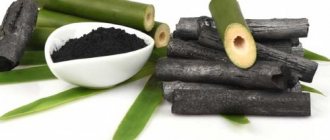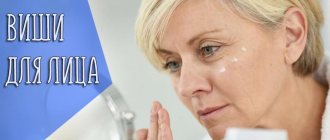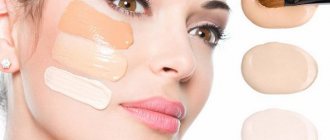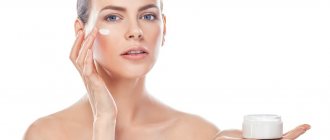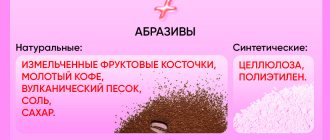A scrub is a good way to cleanse your face. It makes it possible not only to restore the healthy appearance of the skin, but also to remove scars, spots and other defects.
However, not every person who uses such a cleanser knows that after peeling the epidermis needs abundant hydration. Only proper care before and after the procedure will ensure a predominantly productive result.
How to prepare your face for scrub treatments?
The first thing you need to do is remove your decorative cosmetics. Applying any cleansing composition over foundation or highlighter is a real crime, for which you will have to pay for a long time. Don't want your pores to clog even more? Use milk or micellar water!
Then it is very important to wash your face again. Yes, it's necessary. The cosmetics are still at least somewhere, but they remain. In addition, now there are also traces on the skin of the products you used to remove foundation and powder. When everything is done, you can start scrubbing.
By the way, it would be nice if everything happens in a bathhouse, sauna or in a bathroom filled with steam. The more you steam your face, the more the pores will open.
Read also: Concept and types of costs
@lorealparisusa.com
First, gel or facial scrub. What are the similarities and what are the differences?
What is the difference between peeling and scrub? This question interests many women who care for their faces.
The distinctive features of peeling and scrubbing procedures are the preparations applied to the skin, the technology used, the strength of action and varying degrees of effectiveness.
Differences:
- The scrub products contain large particles of grape or apricot seeds, sea salt, wax granules, and nut shells. Peeling preparations are fruit acids or viscous gels that contain small fractions.
- Peeling is a deeper cleansing of the face, but scrubs are superficial.
- Exfoliation is aimed not only at cleansing pores and eliminating exfoliated scales, but also at launching epidermal regeneration processes. For example, with chemical peels, a slight burn with acids occurs, after which the skin begins to actively recover, becomes renewed, uniform and more elastic.
- The scrub has a light massage effect, which cannot be said about exfoliation.
- There are different methods of applying the products: peeling is distributed evenly on the skin, but massage is performed using a scrub. It is forbidden to touch the sensitive dermis in the eye area.
- Peels are better at eliminating acne and rosacea, but, unfortunately, they cannot influence the cause of the formation of these dermatological diseases.
- After scrubbing, due to the weak aggressive effect, as occurs with exfoliation with acids, side effects such as swelling, redness, and excessive peeling of the skin are not observed. The only thing you can feel is excessive tightness of the dermis. But this can be quickly resolved by moisturizing with creams, tonics, aloe or lemon juice masks, as well as washing the face with herbal decoctions.
Clay facial scrub - traditional medicine recipes
Natural clay scrub at home - used on the face as an absorber of oil, dirt and toxins. Using a scrub with clay: stimulates blood circulation, acts as a medicinal and cosmetic product that tightens pores, cleanses and smoothes the skin surface.1. Revitalizing Recipe: Mix two tablespoons of clay powder, a tablespoon of thyme and a tablespoon of dried sage leaves. Add two drops of thyme essential oil and two drops of sage essential oil, then gradually dilute the resulting powder with hot water to form a thick paste. Apply the product to your face and rub over the skin with your fingertips.
—//—//—
Mask or scrub first. Scrubs or masks?
How do you cleanse your face? who uses what? not in terms of removing makeup, but specifically masks or scrubs? how often do you do it? I tried masks, but I understand that with them it’s somehow more and more difficult, while you apply it, while you take it off, although after a mud mask the skin on your face is very smooth. Treasures suited me better. And it’s clearly faster in terms of time, and the effect is excellent. The skin becomes soft, tender and smooth. This is especially noticeable when the scrub contains oils. After using such scrubs, the feeling on the skin is very pleasant. Have you tried using body scrubs?
Peeling after a clay mask. Benefits of clay for the face
Cosmetic clay has a porous structure, due to which it absorbs sebum and impurities. Deeply and carefully cleanses, removes dead skin cells, makes the complexion look fresher, and eliminates inflammation.
Any type of clay has these properties, but there are differences. They are due to the fact that different microelements predominate in them. This is also the reason why clay can be multi-colored.
- White Due to the fact that it is based on a mineral called “kaolinite,” white clay is often called kaolin. One of its properties is skin whitening. Homemade white clay face masks help even out your complexion and make freckles less pronounced. Its ability to narrow pores and provide a lifting effect is also valued. At the same time, it is an excellent absorbent and a good antiseptic.
- Blue It is mined in Bulgaria and Crimea. The clay has a bluish tint due to the fact that it contains silver. Thanks to this, it has a pronounced antiseptic effect. Therefore, masks based on it are recommended for acne. Improves cellular metabolism, due to which it has a rejuvenating effect.
- Green Recommended for mature skin. Smoothes wrinkles, increases the firmness of the dermis and its elasticity. Thanks to zinc, it has pronounced antiseptic properties, mattifies the skin, and dries out inflammation.
- Yellow Famous for its ability to remove toxins. Improves blood circulation, saturates epithelial cells with oxygen. Tones the skin. Suitable for caring for aging skin.
- Red Contains microelements (iron, copper, manganese), which improve the condition of capillaries and saturate the epithelium with oxygen. Suitable for sensitive skin.
- Pink Combines the properties of white and red clay. Also suitable for the care of delicate skin.
- Black Contains quartz, calcium, iron. Stimulates blood circulation and metabolic processes. Helps get rid of toxins, fat deposits, accelerates regeneration. Helps restore a clear facial contour.
Peelings: preparation “before” and “after”
In the previous article “How peelings work,” I said that preliminary preparation and final care are important for the success of peeling procedures. You can follow your doctor's recommendations and purchase “professional” products, or go through your own arsenal of jars and tubes. The main thing is not to neglect these stages, otherwise the effect of peeling may not be what you expected.
Getting ready in advance
Regardless of the depth of the planned peeling, proper skin preparation is the key to the success of the entire operation. This treatment will prepare the skin to better absorb peeling agents, help reduce “shock”, i.e. reduce sensitivity, strengthen the skin, and also help prevent hyperpigmentation and speed up the healing process. It is best to start preparing 1-2 weeks before the start of the procedures.
Look for in the composition (creams, serums, face masks):
tyrosinase inhibitors - kojic acid, lactic acid; antibacterial components, such as azelaic acid, retinol and salicylic acid; mandelic acid - it helps reduce sensitivity; Peptides and growth factors strengthen the skin and further support healing processes.
Immediately after the procedure
In the early stages, i.e. immediately after peeling, the less you touch the skin, the better. However, if you are bothered by pain, swelling, redness, etc., you do not need to endure it.
- Itching is common in almost all skin types. Hydrocortisone will quickly cope with this task. And if you prefer natural remedies, use fireweed extract.
- The pain usually goes away within 24 hours, but you don’t have to endure it either. Ibuprofen is used internally and arnica extract is used externally. It is more pleasant to apply external products when cooled.
Post-peeling care program
After entering the second stage of healing, it is worth considering additional support.
Skin cleansing.
Since the skin is damaged, at first it is better to use cosmetic milk with soothing, antibacterial components that can also inhibit matrix metalloproteinases, which destroy skin proteins (after all, new collagen has just begun to form). The topic here will be allantoin, citric acid, orange oil, grape seed extract and green tea.
During the peeling stage (after 5-7 days), use a soft cloth to apply gentle rubbing to the healing areas. Or buy a cream with small abrasive particles (such products have the word polish in their name). Never use scrubs with apricot or any other kernels, they are too rough. You need aluminum oxide or polyethylene granules.
Support.
The purpose of this stage is to support, soothe and restore the skin. Use formulations with a complex of omega acids and vitamins E, F, PP (panthenol). Include active serums with vitamin C, resveratrol, stem cells, epidermal growth factor and cosmetic stimulating peptides. If you need to prevent hyperpigmentation, choose products that activate microcirculation, improve lymphatic drainage and block melanin formation. The most effective components here are arbutin, kojic acid, grapefruit and cucumber extract.
Advice: do not use highly occlusive products (mineral oils and silicones-dimethicones at the beginning of the list of ingredients), they will increase the temperature of the skin, which is extremely undesirable and slows down healing, and bacteria multiply faster in the created environment.
Protection.
After peeling, broad-spectrum protection from UVA and UVB radiation is required with a total SPF of 20–30. Don't neglect this step. Choose products with physical filters, it is best to find zinc oxide in the composition, it will not only protect the skin from UV radiation, but will also soothe it, providing antimicrobial support.
As you already understand, a post-peeling care system is a necessity that allows the skin to properly form and recover. Your cosmetologist does not scam you out of money, recommending that you come back in a few days for a skincare procedure or buy special cosmetics for home use. Timely help will be very helpful and will cost you much less than a remodeling program in case of an unsatisfactory result.
Tatiana Morrison
Photo istockphoto.com
How to use foot scrub
The skin on the feet is rougher, and corns often appear. Scrubbing will bring it back to normal. It should be remembered that the procedure cannot be carried out with open calluses, painful cracks, or inflammation. The product can be chosen in the form of soap, gel, paste, cream. For massaging on rough areas of the skin, you can use a pumice stone. Typically, a foot scrub contains antibacterial, anti-inflammatory, and nutritional components. Removes unpleasant odor and normalizes the functioning of the sebaceous glands. You can prepare the product yourself.
- Mix 1 tbsp. spoon of oatmeal, 2 tbsp. spoons of cream, the same amount of ground nuts - walnuts, hazelnuts, almonds.
- 1 teaspoon of sugar is mixed with 1 tbsp. spoon cocoa, 2 tbsp. spoons of milk.
- Mash one tomato well with a fork, add 1 tbsp. spoon of sea salt.
Apply the composition for 5 minutes, massage well with a brush and pumice stone. Wash off with water and apply nourishing cream.
Selecting a product by skin type
Women with dry sensitive skin should be especially careful when choosing a scrubbing element.
These types of compositions have the peculiarity of lack of protection, so the abrasive particles must be small so as not to damage the epidermis.
It is recommended to use cosmetic products that contain moisturizing components.
When choosing a product for dry, sensitive types, choose formulations based on a creamy liquid texture, soft granules (for example, jojoba or oatmeal).
If the epidermis is damaged or inflamed , or there is acne, the use of scrubbing elements is prohibited. The procedure may worsen the current condition.
For those with combination oily skin, facial cleansing as an additional treatment will be an excellent cleansing solution.
Gel-based scrubs with smooth particles are suitable. It is better to choose anti-inflammatory, mattifying ones.
A good option is clay bases with sea salt (you can find popular and affordable recipes with this ingredient here).
For normal type it is also possible to cleanse the face using this procedure. The recommendations are the same: abrasive particles are soft, non-scratching, and do not damage the epidermis.
Citrus fruits (for example, with lemon) or fruit are good to tone up.
When choosing, you need to look at the composition of the components to prevent allergies.
You can make your own scrub using the following ingredients:
- white clay and crushed eggshells;
- honey and oatmeal;
- strawberries and olive oil;
- sour cream and ground coffee, etc.
Let's look at a recipe for making a scrub at home for the normal type.
Ingredients: rice ground in a coffee grinder, cottage cheese, vegetable oil .
Mix everything in equal proportions, apply the composition with massage movements, leave for a few minutes, rinse with warm water.
How to choose a facial scrub:
How to apply night face masks: instructions
Night mask
Night face masks are no less in demand. Their use is somewhat different. Let's figure out how to apply a mask to your face correctly.
So, first of all, you should follow a few tips:
- First of all, consider the application time. It should be done 1-1.5 hours before bedtime
- Be sure to apply the product exclusively to cleansed skin. That is, there should be no cosmetics
- Before using the mask, it is recommended to apply tonic or serum. There is an opinion that a mask is the final stage of care, but this is not entirely true. You can use both options
- Apply the mask correctly using massage movements, as if it were a cream. The amount of product used depends on the texture, as well as the effect that is planned to be obtained in the end. In principle, you can apply the products either thinly or thickly, but it is better to avoid the skin around the eyes.
- It is recommended to carry out procedures a maximum of 2-3 times a week. Otherwise, the skin will get used to the components of the product and stop reacting to them.
- Night masks do not require rinsing. It is enough in the morning to simply wash your face after waking up and carry out your usual care. Girls note that the feeling after using the product is excellent - the skin becomes soft and elastic, as well as healthy.
The mask works overnight, but it is absorbed into the skin very quickly.
How to properly apply a film mask to your face: instructions
Film mask
Masks in the form of films are very convenient for cleansing the skin and removing dead cells. In general, this product is best used by those who have normal, oily or problematic skin. The main thing is that it is not too dry or sensitive. Such products resemble ordinary creamy products in appearance, but during use they become a film.
- Before using the product, the face must be prepared. This is done through cleansing and massage. Only after all procedures dry the skin, otherwise the mask will not work as it should.
- Then quickly apply a thin layer of the mask. Please note that it dries out quite quickly. The product is not used for the skin around the eyes and eyebrows.
- Leave the mask on for a while. Again, it all depends on the manufacturer. At this time, you should not wet your face or strain your muscles for the product to work better.
- By the end of the time, the mask should dry well. If this does not happen, then increase the time
- When the mask hardens, begin to carefully remove it. This is done from the bottom up so as not to damage the hairs on the face.
It happens that some places do not dry well because the layer is applied too thick. They can be removed with water or tonic. Over time, you will get used to it and the mask will be removed very easily. After using the product, you can use a nourishing cream.
Which brush should I use to apply the mask to my face?
Today, in the question of how to apply a mask to the face, you cannot do without special brushes. It is important to select the right tools. Every beginner should understand that there are several different types of brushes - silicone, synthetic and natural. The latter are mainly used for massage.
To choose the right tool, cosmetologists advise initially trying several options. In addition, any high-quality device always has separate packaging.
Synthetic brushes are great for applying masks in the form of films that allow you to evenly distribute the mixture. Their bristles are designed in such a way that they do not absorb grease and are easy to clean from various types of contaminants. But it is better to apply thick scrubs, peels and masks with thick brushes. Thanks to the thick bristles, the compositions are perfectly held.
If you plan to peel, then fan synthetic brushes are ideal for it. They are convenient to use and they distribute heterogeneous mixtures with solid particles well.
Brushes that have an oval shape, made from boiled and bleached pork bristles, are extremely popular It holds dense formulations perfectly and distributes over the skin. In addition, it has denser bristles and massages the skin better.
So, to make applying products as convenient as possible, choose a brush that will be most convenient for you. In general, brushes are not expensive, so choose the highest quality and most convenient tool.
How often can you apply a mask to your face?
How often to make masks?
When you answer the question of how to apply a mask to your face, it is immediately clear that such products are not suitable for daily use. This is due to the fact that the substances in the composition have a rather strong effect on the skin. More precisely, stronger than cream. So the skin may eventually get used to them and not absorb them as well. Therefore, there are certain restrictions regarding the frequency of use of face masks.
- Oily skin . It requires cleaning. This should be done more often than other procedures. But you need to be careful with hydration and nutrition, because an oily sheen may appear. In addition, do not get carried away with anti-aging masks, because this type of skin ages much more slowly.
- Normal skin . For such skin it is allowed to use moisturizers. Standard use involves applying the product twice a week. But you can choose the frequency of use yourself, but not more often than indicated by the manufacturer.
- Dry skin. In this case, it is important for girls to constantly provide additional moisture to the skin. So they must choose the appropriate means. Procedures can be performed up to three times a week. As for scrubs, it is not recommended to get carried away with them, because they will dry out the skin even more.
- Sensitive skin . In this case, be careful with any masks. Nutrients are easily absorbed and can be used up to four times a week. But peelings and scrubs should not be used if possible. Combination skin. Caring for such skin is more complex because it combines different types. The frequency of use of cosmetics largely depends on how the sebaceous glands on the skin work. If it has an oily sheen, then moisturizers should be used carefully. It is better to replace them with matting or cleansing ones.
How to properly apply a mask to your face: photo, instructions
It doesn’t matter what exactly you use - a spatula or do everything with your hands, the question of how to apply a mask to your face is solved almost the same way. In general, the scheme for applying masks is always the same:
Mask application lines
The photo shows the main lines according to which any masks are applied. However, in most cases you should avoid the area around the eyes. The fact is that in these places the skin is different, it is much thinner and it requires special care. In particular, more liquid products are used. The same applies to the skin of the lips.
Even if you are sure that you will not have a reaction to the mask, do the test anyway. There are situations when there really seems to be no allergy, but the skin does not react in the best way. So apply a little mask on your wrist and leave it for the required amount of time. If the reaction does not manifest itself within a day, then feel free to use the product.
Before the procedure, collect your hair so that it does not get in your way. The ideal option is to use a cap, but at least a hair tie will suffice. During application, be careful not to get the mask into your eyes, as it may cause burns. This surprises many, because there are often no chemicals in the compositions. In fact, fruit acid is to blame.
When the mask has already been applied to your face, wait a while as indicated by the manufacturer and then rinse with warm water. By the way, not all masks need to be washed off. For example, fabric ones are thrown away after removal, and the remaining product is driven into the face. The same goes for nighttime products. They are completely absorbed into the skin, and in the morning you just need to wash your face as usual.
How to apply a gold face mask: instructions
Golden mask
Today there is a very large selection of facial care products on the market and the question often arises of how to apply a golden mask to the face. By the way, among the products offered there are also Korean ones. So, the gold mask itself is like a very thin foil that is applied to the surface of the face. When the product acts on the skin, gold ions begin to be released. They make blood circulate better through the vessels. Accordingly, nutrients penetrate the skin as deeply as possible. It is also saturated with oxygen, and the cells regenerate.
- There are disposable and reusable gold masks. The latter are much more expensive, but they can be used up to 60 times. If the disposable mask cracks, you will have to remove pieces of foil. Well, reusable ones are much easier to remove.
- There are also alginate masks that are available in powder form. In this case, you first need to dissolve them. Thanks to such products, the skin is maximally moisturized and various types of inflammation go away.
- The package usually includes two sachets. The gel is placed in one, and the powder in the second. To dilute, place everything in one bowl and mix thoroughly. You should get a thick mixture. By the way, the package sometimes includes a stirring spatula. They are great for applying mass to the face. You just need to do everything quickly, because the composition hardens quickly.
- By the way, gold masks can be used for the skin around the eyes and lips. Leave the mask on for about 20 minutes. It should start to dry out, and then it is removed. After completing the procedure, you should not refuse to use serum or nourishing cream.


